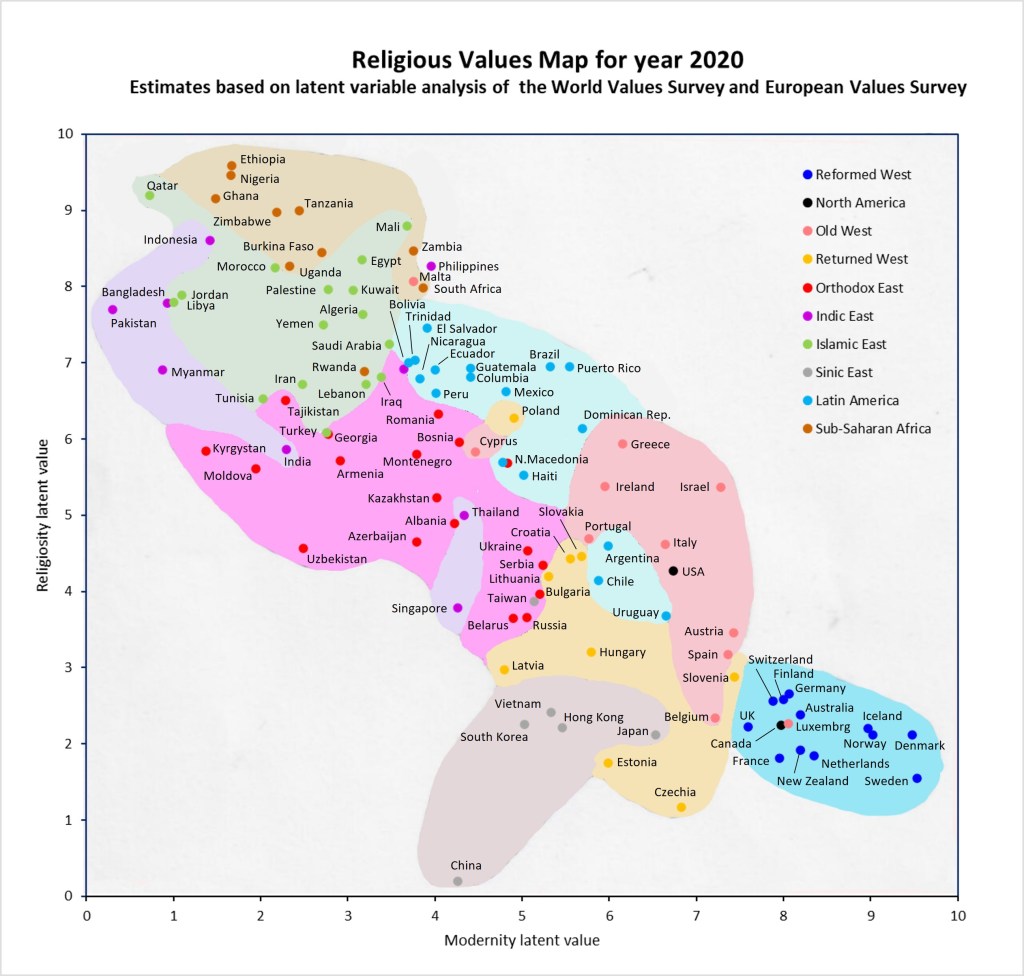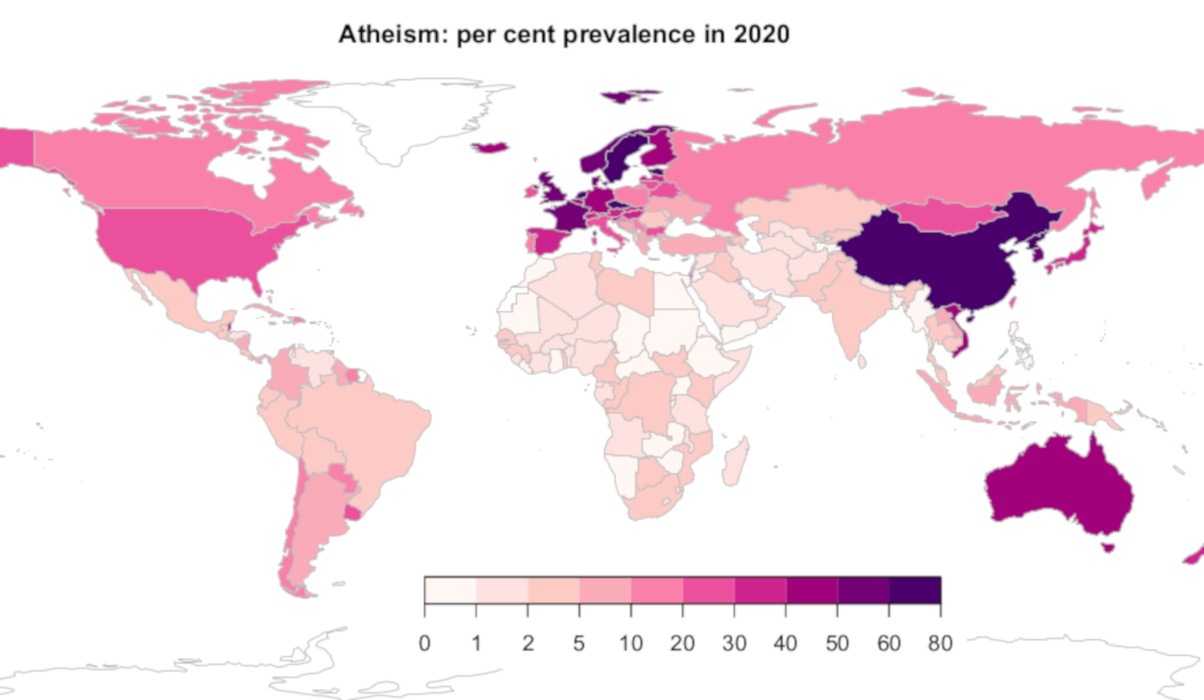In my previous post, I presented updated estimates of trends in average religiosity and religious values for 110 countries using latent variable analysis of data from the World Values Survey and European Values Study [1-4]. The map below plots these countries according to their latent variable values for modernity (horizontal axis) and religiosity (vertical axis) in the year 2020. The colours indicate culture zone and the shading roughly indicates the main domain of countries in each culture zone. Moving downwards to the right on this graph indicates increasing modern values and decreasing religiosity. The inspiration for this map presentation was the culture zone maps produced for earlier waves of these surveys by the political scientists Ronald Inglehart and Christian Welzel [5]. The culture zones are defined in a previous post here.

Apart from the uncertainty in these values resulting from survey sample size limitations, differences in the ways surveys were administered, and differences in translation and cultural understanding of questions, there is also statistical uncertainty in the latent variable estimation process. Not too much should be made of small differences between countries, and I focus on the broader patterns.
The degree of premodernity of religious values is fairly similar for the Islamic East and Sub-Saharan Africa, but the African region is somewhat more religious than the Islamic region. The Indic East has higher levels of premodern values than either of these regions. One manifestation of this is the current rising level of Hindu nationalism in India along with the violent persecution of Indians of other religions. The degree of modernity of values is similar for the majority of Latin American countries and the former Soviet bloc countries, but religiosity is significantly lower in the latter, where religion is largely a marker of national identity and most are non-practicing.
The North America culture zone includes only two countries, the USA and Canada. It is clear from the map that Canada belongs with the Reformed West countries in contrast to the USA, which sits in the Old West zone close to Italy, and also not far from three South American countries: Argentina, Chile and Uruguay. Malta and Cyprus are also outliers for the Old West culture zone, with higher levels of religiosity and less modern values. Along the decreasing religiosity-increasing modernity axis, Qatar is at the top end and Sweden at the bottom end. China is an outlier to the lower left, with the lowest level of religiosity of all the countries, but also a modernity value towards the middle of the scale between modern and pre-modern.
It should be emphasised that this map reflects national averages for individuals and may not be reflected in laws and form of government. Increasingly authoritarian regimes across the world are imposing values that a substantial proportion of their population do not accept. The USA has a growing proportion of the population rejecting democracy in favour of minority rule and the restriction of various rights particularly for women and minority voters. Unhappiness with the results of neoliberal economic and social policies over recent decades has been successfully redirected into “values wars” rather than addressing the real causes of declining average incomes and reductions in social safety nets along with the reduction of taxation and regulation for high income individuals and companies.
References
- Inglehart, R., C. Haerpfer, A. Moreno, C. Welzel, K. Kizilova, J. Diez-Medrano, M. Lagos, P. Norris, E. Ponarin & B. Puranen et al. (eds.). 2014. World Values Survey: All Rounds – Country-Pooled Datafile Version: https://www.worldvaluessurvey.org/WVSDocumentationWVL.jsp. Madrid: JD Systems Institute.
- Haerpfer, C., Inglehart, R., Moreno,A., Welzel,C., Kizilova,K., Diez-MedranoJ., M. Lagos, P. Norris, E. Ponarin & B. Puranen et al. (eds.). 2020. World Values Survey: Round Seven–Country-Pooled Datafile. Madrid, Spain & Vienna, Austria: JD Systems Institute& WVSA Secretariat[Version: http://www.worldvaluessurvey.org/WVSDocumentationWV7.jsp].
- Gedeshi, Ilir, Zulehner, Paul M., Rotman, David, Titarenko, Larissa, Billiet, Jaak, Dobbelaere, Karel, Kerkhofs, Jan. (2020). European Values Study Longitudinal Data File 1981-2008 (EVS 1981-2008). GESIS Datenarchiv, Köln. ZA4804 Datenfile Version 3.1.0, https://doi.org/10.4232/1.13486.
- EVS (2020): European Values Study 2017: Integrated Dataset (EVS 2017). GESIS Data Archive, Cologne. ZA7500 Data file Version 3d. WVS. Archived from the original on October 19, 2013.
- Ronald Inglehart; Chris Welzel. “The WVS Cultural Map of the World”. WVS. Archived from the original on October 19, 2013.


